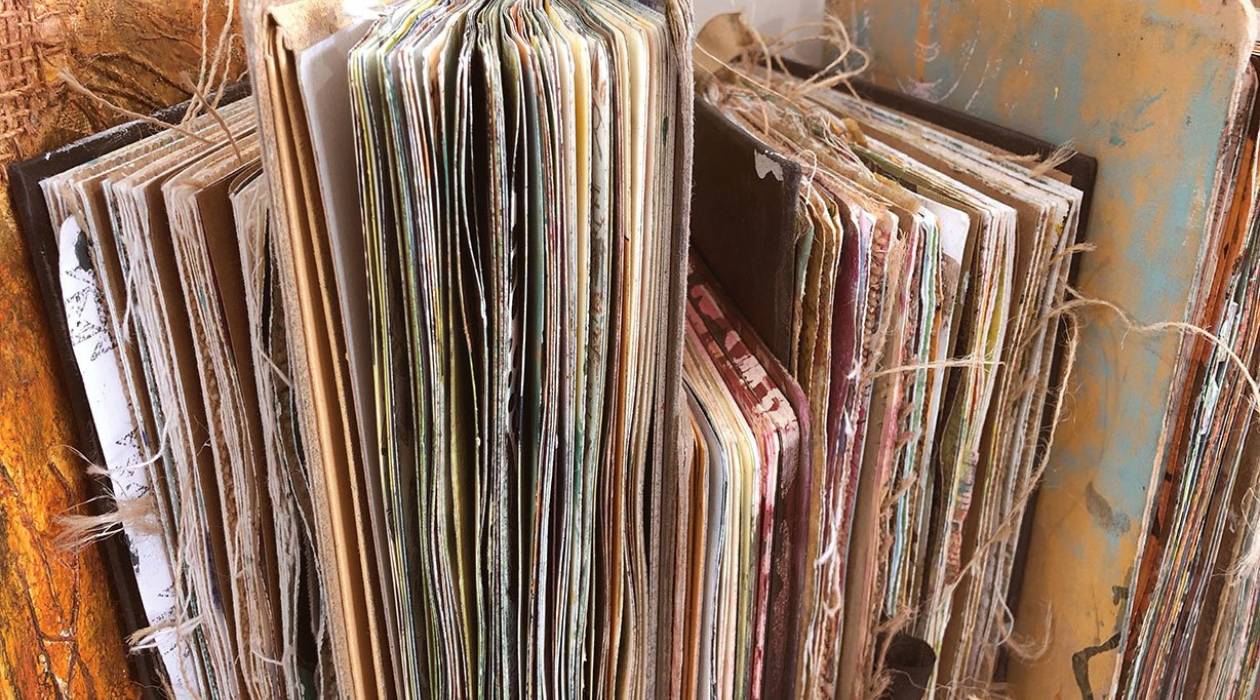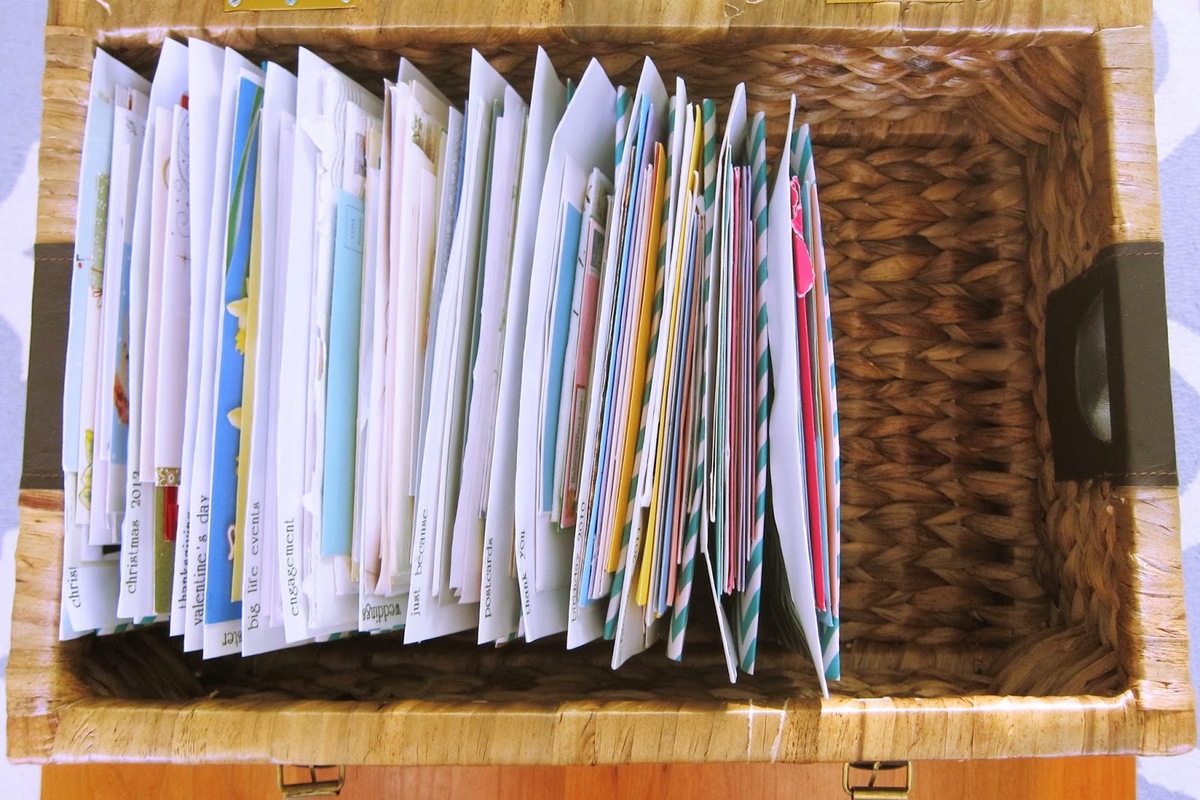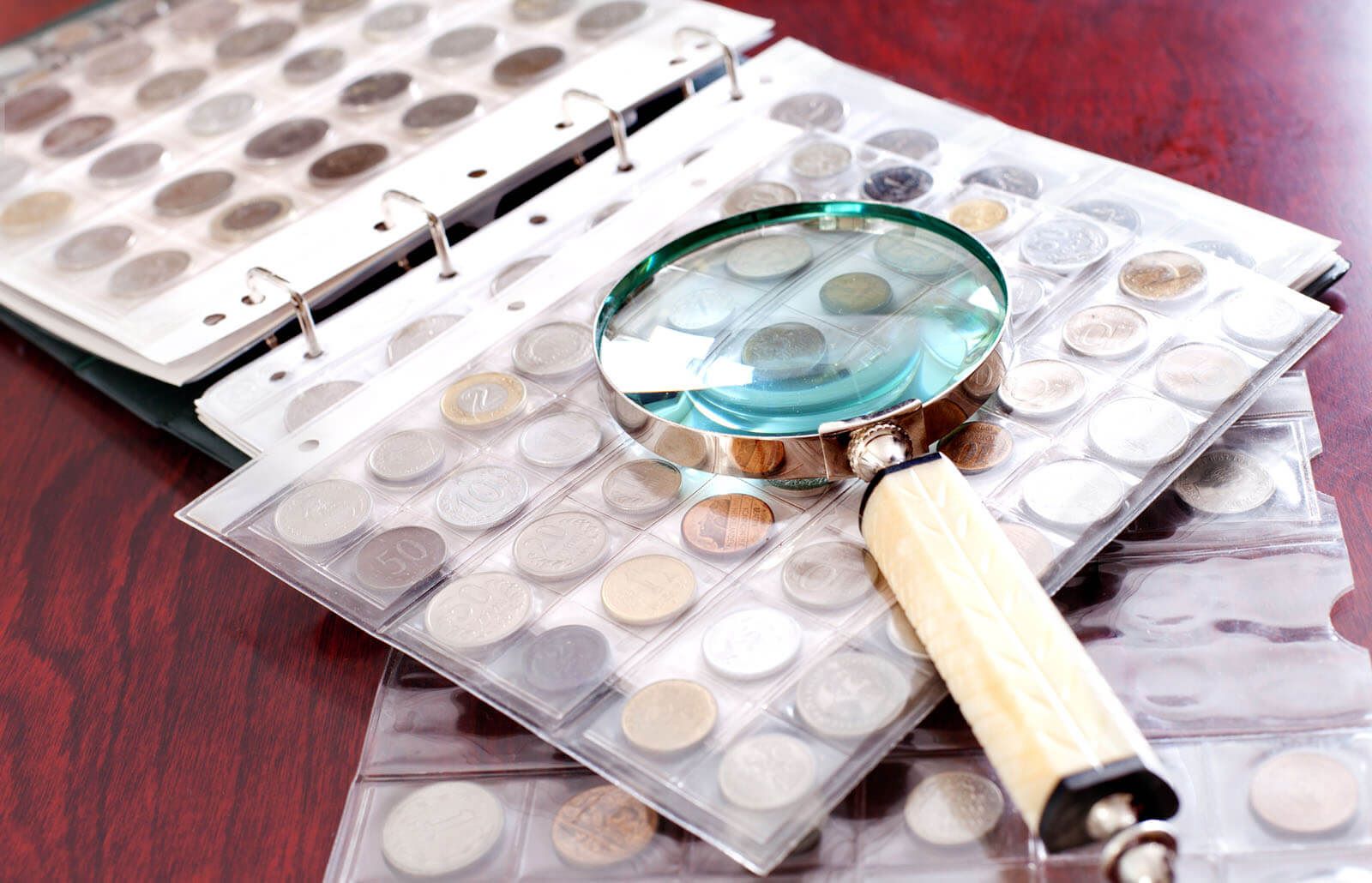

Articles
How To Store Old Journals
Modified: December 7, 2023
Learn the best methods for storing old journals and articles to preserve them for years to come. Safeguard your memories with these simple techniques.
(Many of the links in this article redirect to a specific reviewed product. Your purchase of these products through affiliate links helps to generate commission for Storables.com, at no extra cost. Learn more)
Introduction
Keeping a journal is a wonderful way to document our thoughts, experiences, and emotions. Over time, our journals become treasured keepsakes, providing insight into our past and serving as a source of nostalgia. However, as much as we cherish these personal mementos, it’s essential to store them properly to ensure their longevity and protect them from damage.
In this article, we will discuss the importance of preserving old journals and provide practical tips for storing them. From assessing their condition to selecting the right storage location and container, we will guide you through the process of safeguarding your cherished journals.
Preserving old journals not only safeguards our memories but also allows future generations to glimpse into our lives. So, let’s delve into the world of journal storage and ensure that these precious pieces of our personal history remain intact for years to come.
Key Takeaways:
- Preserve your old journals by assessing their condition, selecting an appropriate storage location, and choosing the right container. Organize, maintain, and periodically inspect to ensure their longevity and safeguard cherished memories.
- Safeguard your old journals by carefully preparing them for storage, organizing and labeling, and implementing preventive measures. Regular inspections and preservation actions will protect these valuable pieces of personal history.
Read more: How To Store Journals
Assessing the Condition of the Journals
Before diving into the process of storing old journals, it’s crucial to assess their condition. Understanding the state of your journals will help determine the appropriate storage methods and any necessary preservation measures.
Start by carefully examining each journal, paying attention to the quality of the paper, binding, and overall stability. Look for signs of damage such as yellowing pages, brittle paper, mold or mildew, loose pages, or weakened binding.
Once you have assessed the condition of each journal, categorize them into three main groups: well-preserved journals, journals with minor damage, and journals with significant damage.
For well-preserved journals, you can follow standard storage methods to maintain their condition. Journals with minor damage may require extra care, such as additional protective measures or repairs. Journals with significant damage may need professional assistance to preserve or restore them.
Remember, each journal is unique, and the level of preservation required may vary. By carefully assessing the condition of your journals, you can tailor your storage approach to ensure their long-term survival.
Selecting an Appropriate Storage Location
When it comes to storing old journals, the location you choose plays a vital role in preserving their quality. Here are some factors to consider when selecting a suitable storage location:
- Avoid direct sunlight: Exposure to sunlight can cause fading and deterioration of the journals’ paper and ink. Choose a storage area away from windows or use UV-filtering window coverings to minimize exposure.
- Maintain consistent temperature and humidity: Fluctuations in temperature and humidity can damage paper and promote the growth of mold and mildew. Aim for a storage area with a stable climate, ideally between 60-70 degrees Fahrenheit and 40-50% relative humidity.
- Avoid areas prone to water damage: Basements, attics, and areas susceptible to leaks should be avoided as storage locations. Moisture can quickly cause irreparable damage to journals. Opt for a dry and well-ventilated space instead.
- Keep away from extreme temperatures: High heat or cold temperatures can lead to paper degradation. Avoid storing journals near heating vents, radiators, or in areas prone to extreme temperature fluctuations.
- Consider accessibility: Choose a location that is easily accessible for whenever you want to revisit your journals. It should be a space where you can comfortably spend time reading and reminiscing.
- Protect against pests: Ensure the storage area is well-sealed to prevent insects or rodents from accessing your journals. Consider using insect repellents or traps as an additional precaution.
By selecting an appropriate storage location, you create a conducive environment for the long-term preservation of your cherished journals.
Choosing the Right Container or Box
Once you’ve identified a suitable storage location, the next step is to choose the right container or box to house your old journals. Here are some factors to consider when making your selection:
- Material: Opt for acid-free, lignin-free, and archival-quality containers or boxes. These materials are designed to preserve paper and protect it from deterioration caused by acidity and chemical reactions.
- Size: Choose a container or box that comfortably accommodates your journals without excessive squeezing or folding. Allow enough space for easy retrieval and flipping through the pages.
- Sturdiness: The container should be sturdy enough to protect the journals from external pressure, moisture, and pests. Look for boxes with reinforced corners and secure closures.
- Stackability: If you have multiple journals to store, consider containers that are stackable to maximize space efficiency. Ensure they can withstand the weight of other boxes without collapsing.
- Accessibility: Opt for containers that allow easy access to your journals without causing excessive strain or damage. Look for lids that can be easily removed or containers with hinged covers.
- Labeling: Choose containers that have designated areas for labeling or provide space to attach identification labels. This will help you quickly locate specific journals without rummaging through multiple boxes.
- Additional Protection: Consider using acid-free tissue paper or archival-quality envelopes to individually wrap fragile journals. This provides an extra layer of protection against dust, moisture, and potential damage.
Selecting the right container or box is crucial in safeguarding your old journals. It ensures that they are stored safely and protected from the various elements that can cause deterioration over time.
Preparing the Journals for Storage
Before placing your old journals inside the chosen container or box, it’s essential to prepare them properly. Taking a few extra steps to safeguard the journals can significantly extend their lifespan. Here are some tips for preparing your journals for storage:
- Clean the journals: Use a soft, lint-free cloth to gently wipe the covers and pages of the journals to remove any dust or dirt. Avoid using harsh cleaning agents that can damage the paper or ink.
- Repair minor damage: If you have journals with loose pages or torn covers, consider making minor repairs. Use acid-free archival tape or glue to mend any small tears or loose sections carefully.
- Insert acid-free bookmarks: Place acid-free bookmarks between pages to mark any significant entries or passages. These bookmarks will help prevent stress on the binding when flipping through the pages later.
- Consider interleaving: If you have delicate or fragile pages, like those made of onion skin paper, consider interleaving them with acid-free tissue paper. This helps minimize contact between the pages and provides additional protection.
- Avoid using adhesives or sticky notes: While it may be tempting to use sticky notes or adhesive page markers, they can cause damage over time. The adhesive can seep into the pages and cause staining or tearing.
- Remove any metal objects: Before storing the journals, ensure there are no metal objects such as paperclips or staples inside. These metal objects can rust and cause irreparable staining or damage to the surrounding pages.
By taking the time to prepare your journals for storage, you can prevent further deterioration and ensure that they remain in good condition for years to come.
Store old journals in a cool, dry place away from direct sunlight to prevent deterioration. Consider using acid-free boxes or folders to protect them from damage.
Read more: How To Organize A Journal
Organizing and Labeling the Journals
Proper organization and labeling of your journals are essential for easy retrieval and maintenance. Follow these tips to effectively organize and label your stored journals:
- Categorize by chronology or theme: Depending on your preference, organize your journals chronologically, starting with the oldest to the newest, or categorize them by theme or topic.
- Create an inventory: Keep a detailed inventory or index of your journals. Note down important details such as dates, titles, and any significant content to help you quickly find specific entries.
- Use dividers or separators: If you have multiple themes or categories, consider using dividers or separators within the container to separate different sections. This will make it easier to locate and retrieve specific journals.
- Label the container or box: Clearly label the container or box with a descriptive title, such as “Journal Collection” or “Personal Journals.” This will help you identify the content at a glance and distinguish it from other storage items.
- Add labels to individual journals: Attach small labels or tags to each journal indicating its date range, topic, or any other relevant information. This will assist in locating specific journals without having to search through the entire collection.
- Arrange for easy access: Place the journals in the container or box in a way that allows for easy access. Consider organizing them in a manner that allows you to browse through them without removing every single journal.
- Consider digital backups: If you’re concerned about the longevity of the physical journals, consider creating digital backups. Scan or photograph the pages and store them securely on a computer or cloud storage platform.
By organizing and labeling your journals, you create a systematic and efficient storage system that makes it easy to locate and enjoy your cherished entries whenever you want.
Maintaining the Storage Area and Preventing Damage
Once you have stored your old journals in the chosen container or box, it’s important to properly maintain the storage area to prevent any potential damage. Here are some tips to help you maintain the storage area and protect your journals:
- Keep the storage area clean: Regularly clean the storage area to remove dust and debris. Avoid using harsh cleaning agents that could accidentally come into contact with the journals.
- Monitor temperature and humidity: Regularly check the temperature and humidity levels in the storage area. Investing in a hygrometer can help you maintain a stable environment. Consider using dehumidifiers or humidifiers to control moisture levels when necessary.
- Protect against pests: Implement preventive measures to deter pests. Use mothballs, cedar blocks, or other natural deterrents to keep insects and rodents away from the storage area.
- Ensure proper ventilation: Maintain adequate air circulation within the storage area. Good ventilation helps prevent the buildup of musty odors and minimizes the risk of mold or mildew growth.
- Avoid overcrowding: Avoid cramming too many journals into the storage container. Overcrowding can lead to damage, such as creasing or tearing. Leave enough space for the journals to breathe and prevent unnecessary pressure.
- Do not stack heavy objects on top: Avoid placing heavy objects on top of the storage container or box. This can cause damage to the journals and compromise their structural integrity.
- Regularly check for signs of damage: Periodically inspect the journals for any signs of moisture, mold, pests, or deterioration. Early detection allows for prompt action and prevents further damage.
By maintaining the storage area and implementing preventive measures, you can ensure the long-term preservation of your old journals and protect them from potential harm.
Periodic Inspection and Preservation Measures
To ensure the ongoing preservation of your old journals, it’s important to conduct periodic inspections and implement additional preservation measures when necessary. Here are some steps you can take:
- Perform regular inspections: Schedule regular inspections of the stored journals to identify any signs of deterioration or damage. Check for discoloration, mold growth, insect infestation, or any other issues.
- Address issues promptly: If you notice any problems during inspections, take immediate action. Remove any damaged or affected journals from the storage area and assess the extent of the damage.
- Consult with professionals: If you have journals with significant damage or deterioration, consider consulting with preservation professionals. They can provide guidance on restoration techniques or recommend appropriate conservation treatments.
- Consider rehousing: If you find that the current storage container or box is no longer suitable or if you have acquired new journals, consider rehousing them in more appropriate and spacious containers. This will ensure optimal preservation and organization.
- Upgrade storage materials: Over time, the quality of storage materials may deteriorate. Consider upgrading to acid-free, lignin-free, and archival-quality containers, acid-free interleaving paper, or other preservation materials that meet conservation standards.
- Practice proper handling: Whenever you retrieve a journal from storage, handle it with clean and dry hands. Avoid eating or drinking near the journals and minimize contact with the pages to prevent potential stains or damage.
- Document and digitize: Consider documenting the condition and content of your journals through photographs or written descriptions. Additionally, consider scanning or photographing the pages to create digital copies for added protection and accessibility.
By regularly inspecting your journals and implementing appropriate preservation measures, you can proactively address potential issues and ensure the longevity of your cherished memories.
Conclusion
Your old journals hold the power to transport you back to moments and emotions captured in time. Preserving these precious memories requires careful thought and consideration. By assessing the condition of your journals, selecting an appropriate storage location, choosing the right container, and preparing them for storage, you can ensure their longevity.
Organizing and labeling your journals, maintaining the storage area, and periodically inspecting for damage are crucial steps in the preservation process. By implementing these measures and taking proactive action when necessary, you can protect your journals from deterioration, pests, and other potential risks.
Remember, preserving your old journals is not just about safeguarding the physical pages, but also the memories and experiences they hold. They are a valuable part of your personal history and deserve to be cherished for generations to come.
So, take the time to assess, protect, and organize your old journals. Allow them to be a source of inspiration, reflection, and connection with your past. With proper care and preservation, you can ensure that these treasures remain intact, enabling you to relive the moments and emotions they capture whenever you desire.
As you embark on this journey of preserving your old journals, may you find joy in reconnecting with your own story and realizing the profound impact it can have on your present and future.
Frequently Asked Questions about How To Store Old Journals
Was this page helpful?
At Storables.com, we guarantee accurate and reliable information. Our content, validated by Expert Board Contributors, is crafted following stringent Editorial Policies. We're committed to providing you with well-researched, expert-backed insights for all your informational needs.















0 thoughts on “How To Store Old Journals”